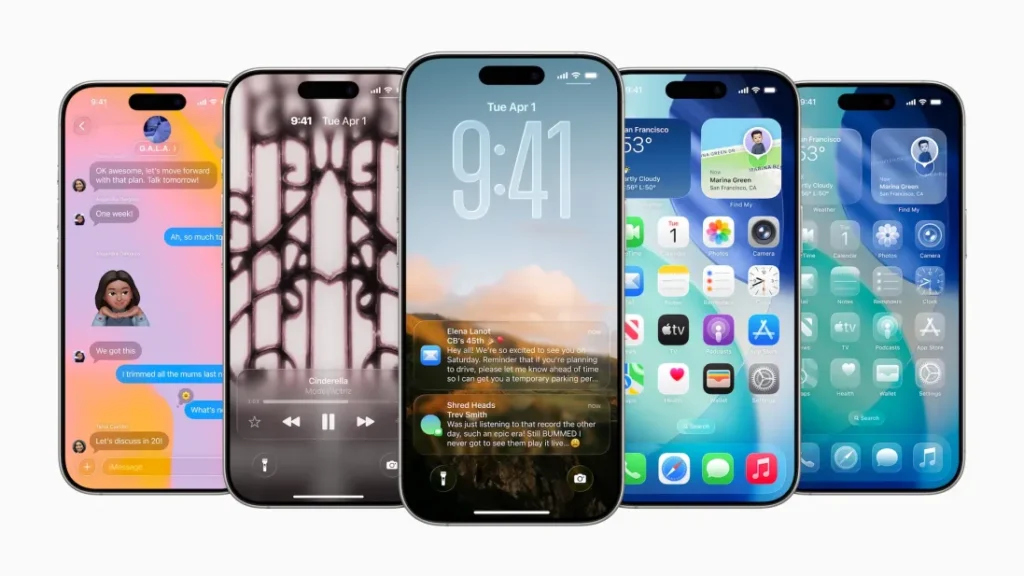Overview of iOS 26 Beta 4 Release
The release of iOS 26 Beta 4 marks a pivotal moment in Apple’s ongoing software development process, reflecting the company’s commitment to refining user experience and enhancing functionality within its ecosystem. Scheduled just before the anticipated public beta, this release serves multiple objectives, primarily aimed at developers who are eager to assess and integrate new features into their applications. Apple has consistently utilized beta versions as a strategy to engage its developer community, inviting feedback and facilitating the identification of any issues that could detract from user experience in the final release.
As developers embark on testing iOS 26 Beta 4, they will encounter an array of enhancements that signal Apple’s focus on performance optimization and innovative tools. One notable feature is the introduction of Liquid Glass tweaks, which are aimed at improving visual aesthetics and responsiveness. These adjustments highlight Apple’s dedication to delivering an interactive and sophisticated interface, while also exploring the role of artificial intelligence in providing tailored news summaries based on user preferences. Such advancements not only aim to enrich the user experience but also empower developers to create applications that leverage these cutting-edge features.

Liquid Glass Redesign Changes
The introduction of iOS 26 Beta 4 has brought noteworthy liquid glass redesign changes, reflecting Apple’s commitment to enhancing user experience through both aesthetic and functional improvements. One significant alteration is the refinement of the glass-like interface, which now presents a more seamless, immersive feel. The edges of application icons have been made slightly rounder, giving a softer, more approachable appearance, which complements the overall fluidity of the operating system.
Furthermore, the new translucent effects have been upgraded, allowing background elements to subtly blend with the foreground. This enhancement not only provides an added layer of depth but also serves to reduce visual clutter, enabling users to focus better on essential functions. Such modifications align with Apple’s design philosophy, which emphasizes minimalism and intuitive interaction. The rationale behind these updates stems from extensive user feedback that highlighted the desire for a more cohesive visual experience while maintaining familiarity with the existing interface.
In addition to aesthetic adjustments, several functional tweaks have been implemented within the liquid glass redesign. Users can now enjoy refined gestures and responsiveness, resulting in quicker navigation and smoother transitions between applications. These improvements signify a direct response to the increasing need for fluid user interfaces as more features are integrated into mobile devices. By streamlining these interactions, Apple aims to foster a more engaging user experience while ensuring the platform remains intuitive for both new users and seasoned veterans of iOS.
In contrast to previous versions, which primarily focused on standalone app functionality, the liquid glass redesign in iOS 26 Beta 4 encapsulates a harmonious balance of aesthetics and usability. As Apple continues to push the boundaries of design, these changes herald a promising future not only for current iOS users but also for the evolution of the operating system as a whole.
AI-Powered Notification Summaries
The recent introduction of AI-powered news summaries in iOS 26 Beta 4 marks a significant evolution in how users interact with notifications on their devices. Leveraging artificial intelligence, this new feature enhances user experience by prioritizing notifications, ensuring that the most relevant information surfaces first. Users will find that the AI intelligently assesses the importance of news articles and messages, allowing for more efficient management of daily alerts. This streamlining of information not only helps in reducing clutter but also facilitates a quicker and more meaningful interaction with the content presented.
One of the standout elements of this AI-driven update is its ability to filter notifications based on user preferences and habits. By analyzing past engagement and reactions to various types of content, the system learns to categorize notifications, which promotes a tailored notification experience. This personalization allows individuals to focus on what truly matters right when they glance at their devices, thus enhancing productivity and reducing distractions. Additionally, the AI news summaries pull information from a range of trustworthy sources, ensuring that users receive concise and accurate content.
However, despite these attractive features, potential concerns linger regarding user privacy and the accuracy of AI-generated summaries. While the re-introduction of AI functionalities is aimed at improving user interaction, it is essential to contemplate the potential biases inherent in the algorithms. Prior versions of iOS also experimented with notification management, but the smart enhancements seen in this release present a more nuanced solution for information overload. Furthermore, comparing this feature with those in other mobile operating systems highlights that while many platforms are integrating AI, iOS’s approach uniquely focuses on user-centered notification management.
In conclusion, the AI-powered news summaries in iOS 26 Beta 4 both elevate the user experience and prompt important conversations about the role of artificial intelligence in day-to-day interactions. As users begin to familiarize themselves with this feature, the real test will lie in its adaptability and overall effectiveness in meeting diverse user needs.
Preparing for the Public Beta Launch
The anticipation surrounding the public beta launch of iOS 26 is palpable among users and developers alike. The public beta phase serves a critical function in the development lifecycle of the operating system, as it allows a wider audience to engage with the software and provide valuable feedback. This real-world testing is essential for identifying bugs, optimizing performance, and ensuring a smooth user experience upon the final release.
Apple has established a timeline for the public beta rollout, which is expected to commence shortly after the successful completion of the developer beta period. Typically, the public beta is released approximately a month after the developer beta, allowing Apple to iterate quickly in response to initial feedback. Users interested in participating in this process can sign up through the Apple Beta Software Program, where they will receive guidance on how to download and install the beta version safely. It is advisable for users to back up their devices before installation to avoid any potential data loss.
Apple encourages feedback during the beta period and has made it increasingly easy for users to report issues through the Feedback Assistant app. This tool allows both developers and the general public to communicate any bugs or glitches encountered, thereby assisting Apple in refining the final version of iOS 26. This level of engagement highlights Apple’s commitment to creating a robust and stable operating system. As excitement builds, it is crucial for potential testers to approach the public beta with mindful consideration of the inherent risks associated with beta software. Ultimately, participating in the public beta not only aids individual users in experiencing new features earlier but also contributes to the overall improvement of iOS 26 for the entire Apple community.



